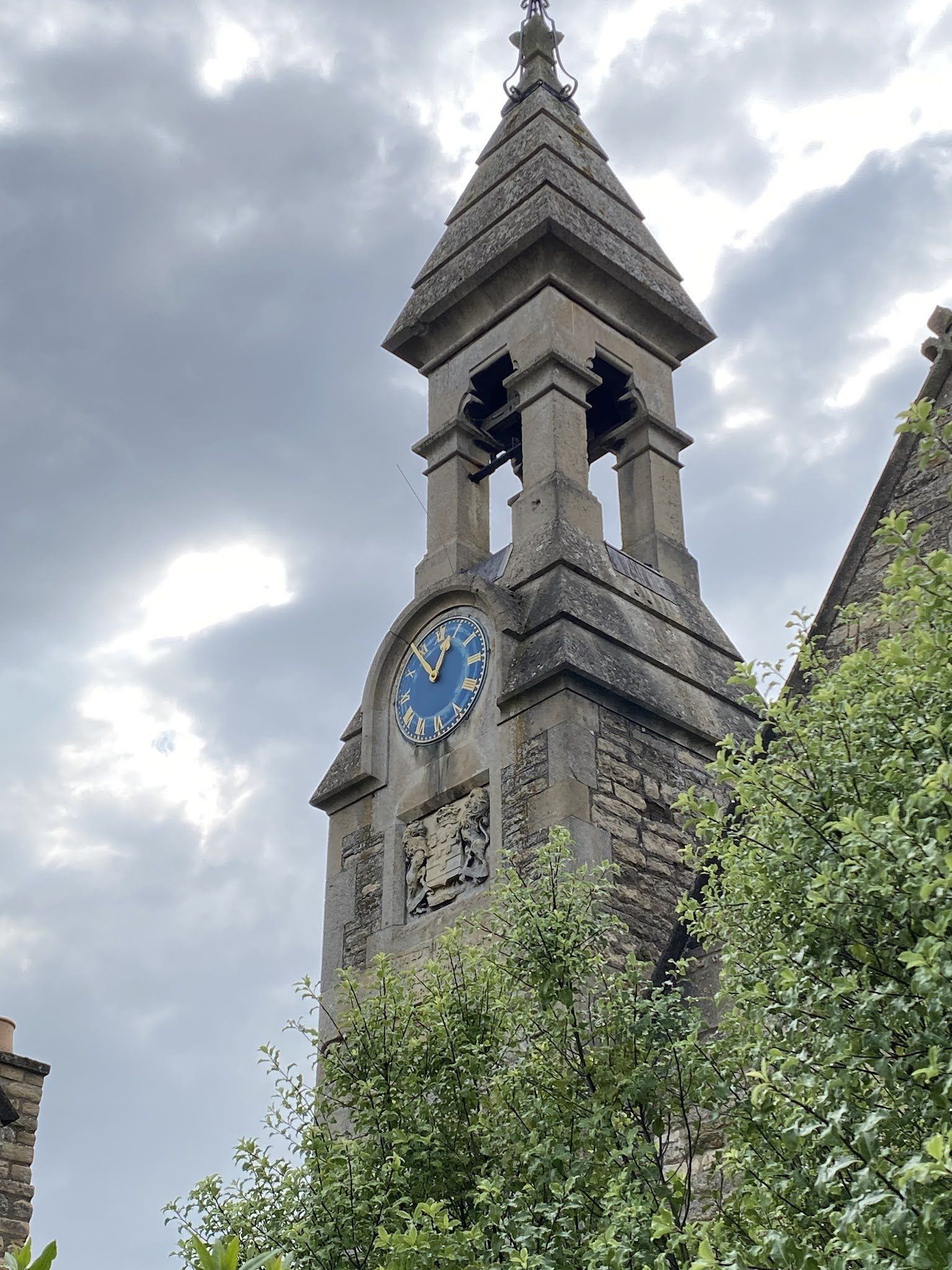The Village Hall – A Historic Victorian Gem in Easton on the Hill
The Village Hall is a quintessential Victorian property, built from square coursed limestone with ashlar dressings and topped with a Collyweston Stone slate roof. This Grade II listed building is a prime example of Victorian architecture and serves as a historic venue for a wide range of events.
Architectural Features
The hall boasts a high roof and impressive gothic-style stone mullioned windows that feature intricate plate tracery, cusped-head lights, and roundels, adding to its unique and grand character.
One of the hall’s most distinctive elements is its square bell tower, adorned with an ashlar cupola and decorative spiralet. A partially legible panel on the tower reveals that the hall was originally constructed as a school with funding from the Richard Garford endowment fund of 1670.
The tower is also home to a Benson clock, installed at a cost of £65.11s. The clock, affectionately nicknamed 'The Cadger', was funded by the village community, with 84 villagers contributing £5.19s towards its cost. This iconic feature continues to be a cherished part of the local heritage.


Historical Significance
The land where the Village Hall stands was once home to a barn and stables for the Blue Bell Inn, owned by the Marquis of Exeter. In 1867, the Marquis agreed to exchange this land for the old village school premises, and the new school was designed by Stamford architect Edward Browning. It was built by Messrs. Perkins and Sons, local builders from Easton on the Hill, at a total cost of £1,200, most of which was raised through public subscription.
The construction of New Road coincided with the opening of the new school in 1868, providing access to the building. The school continued to operate as an elementary school until 1928, when new premises were built on New Road. The old school building then became the infants department until 1975, after which it was sold to the Easton on the Hill Village Hall Fund Committee for use as a village hall.
From School to Village Hall
In 1967, discussions began about the potential availability of the Village Infant School as a village hall. After years of negotiations, the sale was finalized in 1974, when the building was offered to the Village Hall Fund Committee for £3,550. The historic building has since been lovingly maintained and transformed into the vibrant community space it is today.
A Unique Venue for Your Event
With its rich history, stunning Victorian architecture, and modern amenities, the Village Hall is the perfect venue for hosting:
- Weddings, anniversary celebrations, and family gatherings
- Corporate events, business meetings, and workshops
- Art exhibitions, community events, and society meetings
- Music performances, theatre rehearsals, and film screenings
- Fitness classes, dance classes, and other community activities
